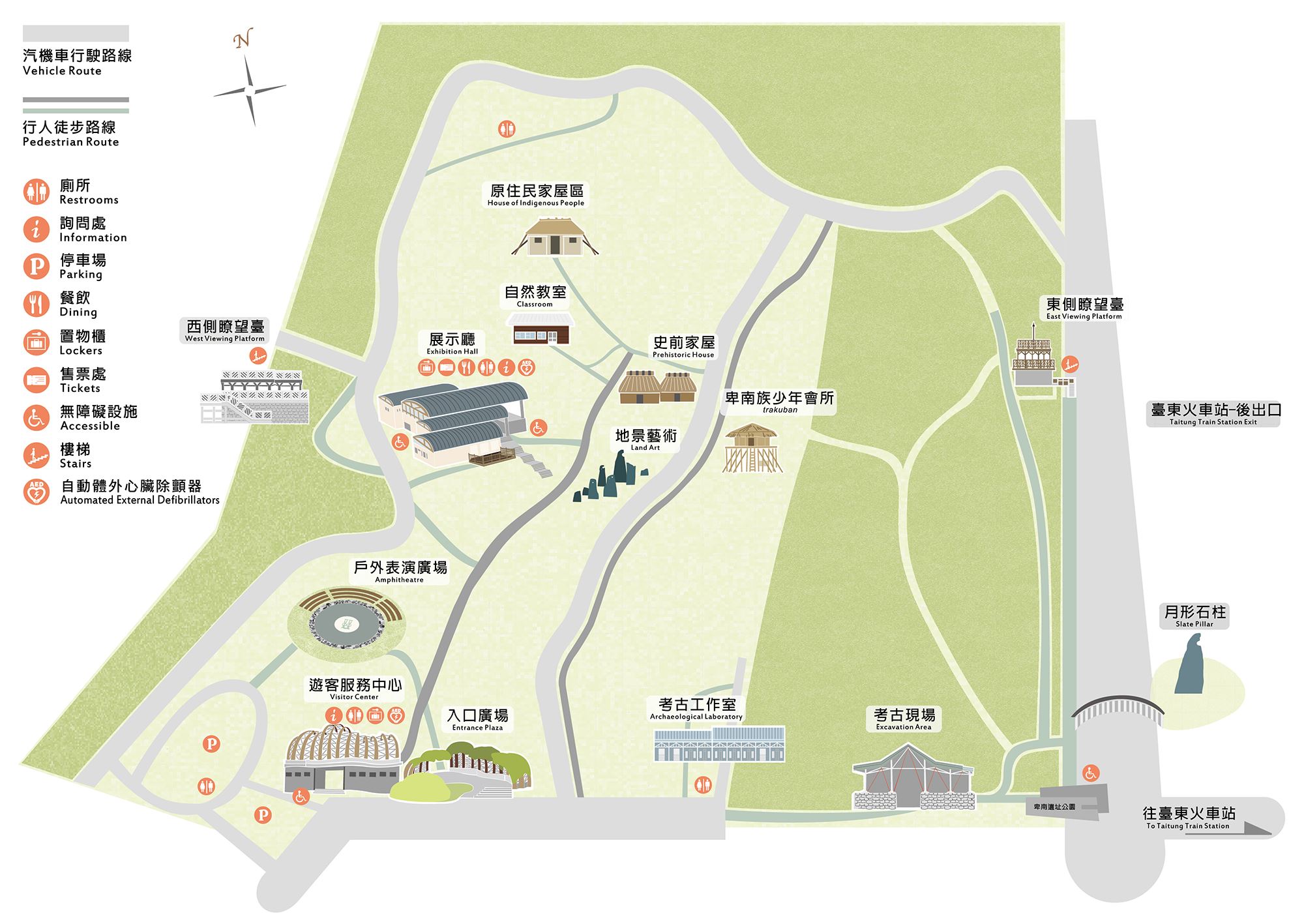Origins
Construction on the new railway station for Taitung in July 1980 brought to light – not to mention destroyed – remains from the past that had been buried in the soil for thousands of years, triggering a high degree of interest by the public. As a result, Drs. Sung Wen-hsun and Lian Chao-mei, from the Department of Archaeology and Anthropology at National Taiwan University, led an excavation spanning 10,000 square meters to save these treasures. What they found were nearly 1,600 slate coffins and over 20,000 implements made of clay, stone, and jade, the number for the latter three constituting a record for Taiwan. The Peinan site is Taiwan’s largest prehistoric settlement site with the most complete form and array of materials as well as the site boasting the largest number of slate-coffin burial sites in the Pacific Rim and Southeast Asia.
Accordingly, Dr. Sung proposed in September 1982 that a museum be built in an undamaged area of the site. However, since it is an archaeological site and thus not suited to the construction of a large building, a different place was chosen, to the south of the Kangle railway station, as the site for the National Museum of Prehistory. As for the Peinan site, it was determined that a park would be built there to preserve the area and serve as a showcase of the past. Work began on the Peinan Culture Park (which was later renamed the Peinan Site Park) in 1994, and it opened to the public in December 2002 as Taiwan’s first park at an archaeological site.
Vision
- ● Preserve and promote cultural assets: According to research, the Peinan site can be broadly considered to span 100 hectares, though the park is only about 30 hectares. Within, the excavation site and exhibition hall are a display of the completeness of the park. With excavated structures and relics, replicas of prehistoric scenes, guided tours, and educational promotion, the excavation site and exhibition hall are the core, the most appealing, and the most educational aspects of the park.
- ● Serve as a venue for the presentation and experience of Indigenous culture: By establishing an area for the display and experience of traditional Indigenous lifestyles, including such aspects as traditional settlements, houses, offering sites, staple foods, and commonly used plants, the diverse, rich culture of the park is presented.
- ● Promote education on the environment and ecology: With the use of endemic plants, the prehistoric look of the area has been recreated as a main feature of the park. With the foundation of the existing flora and the way different kinds of vegetation are separated into different areas based on the topography, the natural low-elevation ecosystem of the east coast (coastal, tropical, and subtropical forests) is presented. In addition, endemic species that flower, change color, and attract birds and butterflies were chosen to add to both the park’s natural feel and beauty. Guided tours and other educational events provide guests with information on the natural ecology and environmental protection.
Facilities
The Peinan Site Park is a combination of prehistoric culture, Indigenous culture, and natural scenery. At the visitor center, visitors may obtain information on the park and get to know more about both the site and the prehistoric Peinan culture in the exhibition hall. Visitors may also go to the excavation site and the crescent moon-shaped slate pillar to see actual prehistoric remains. With the right timing, visitors will even be able to see archaeologists at work. Outside are full-size models of two prehistoric houses, a Pinuyumayan trakuban (“men’s house”), and a traditional Indigenous house. Also, viewing platforms to the east and west offer views of the entire grounds. As can be seen, the park is a place of research, preservation efforts for the site and the relics found within, social education, and beautiful scenery, whose openness and verdant landscape make it a great place for recreation and relaxation.
